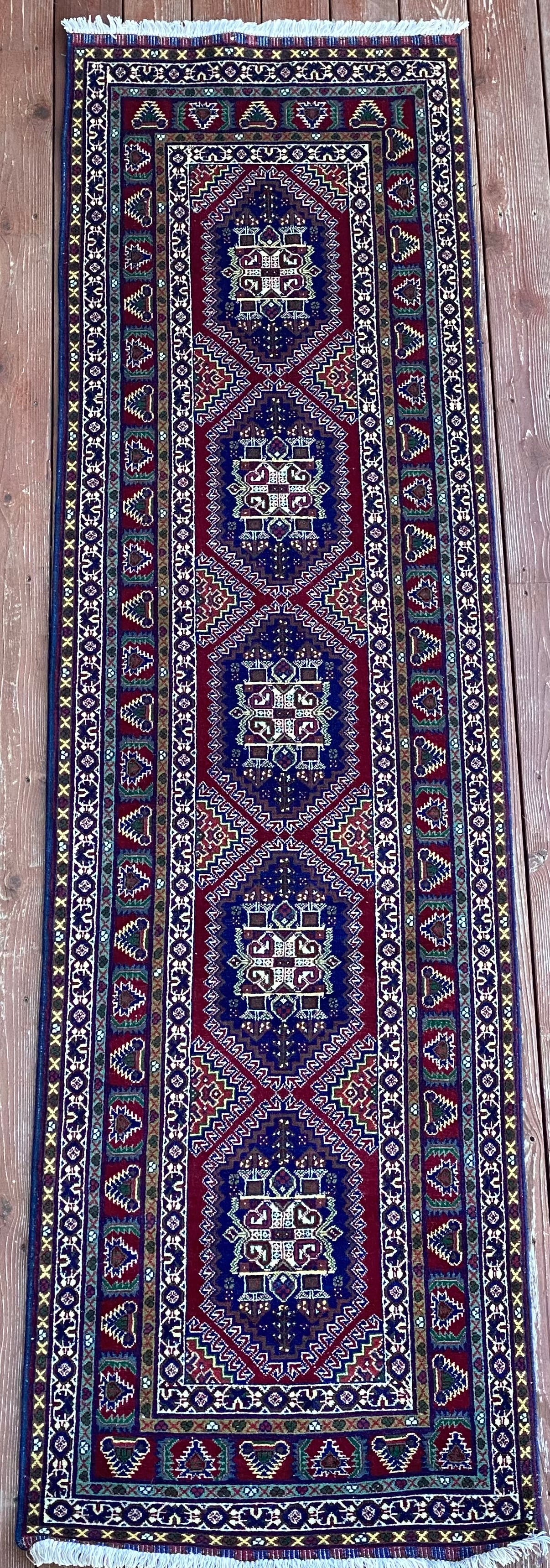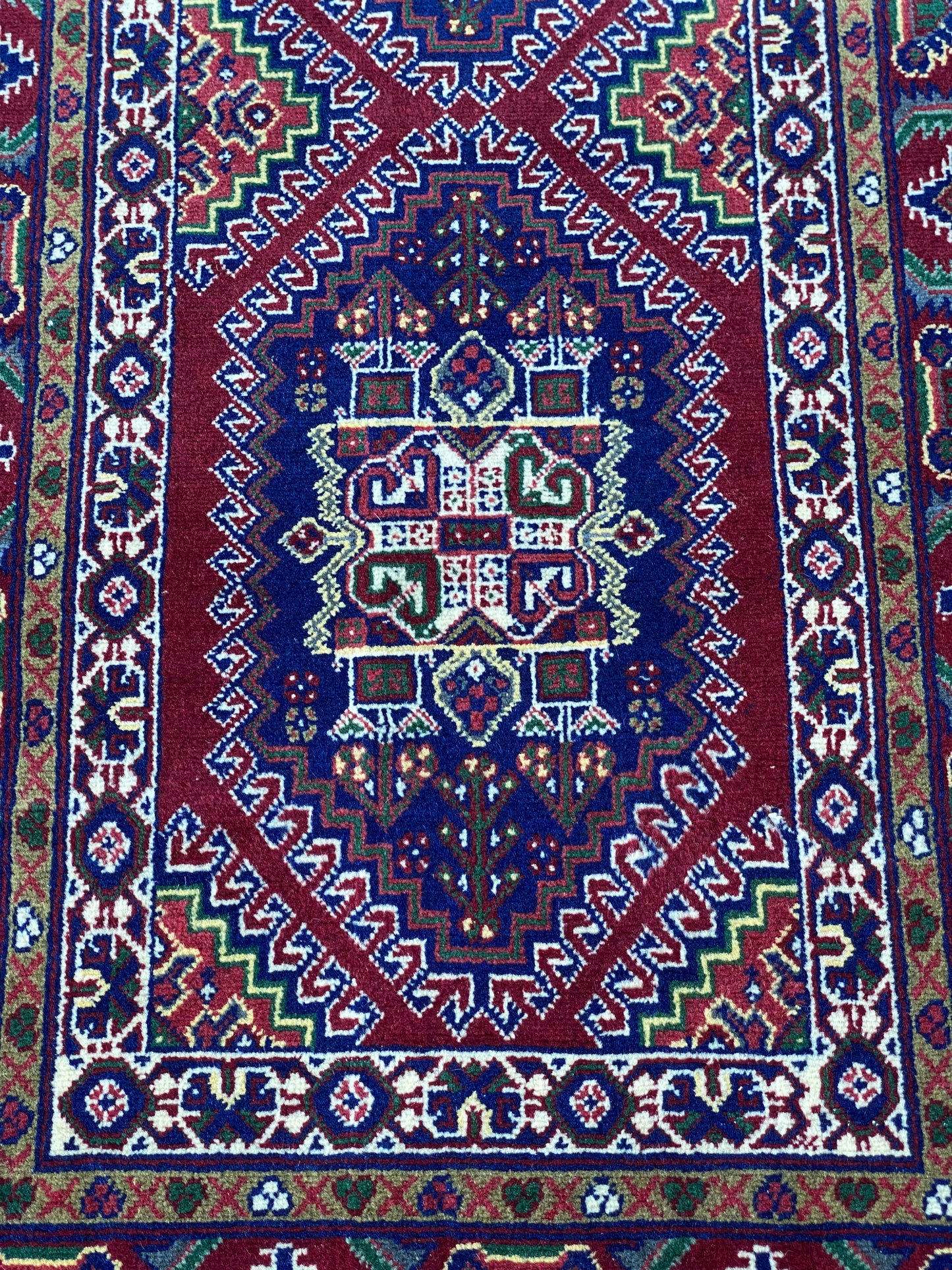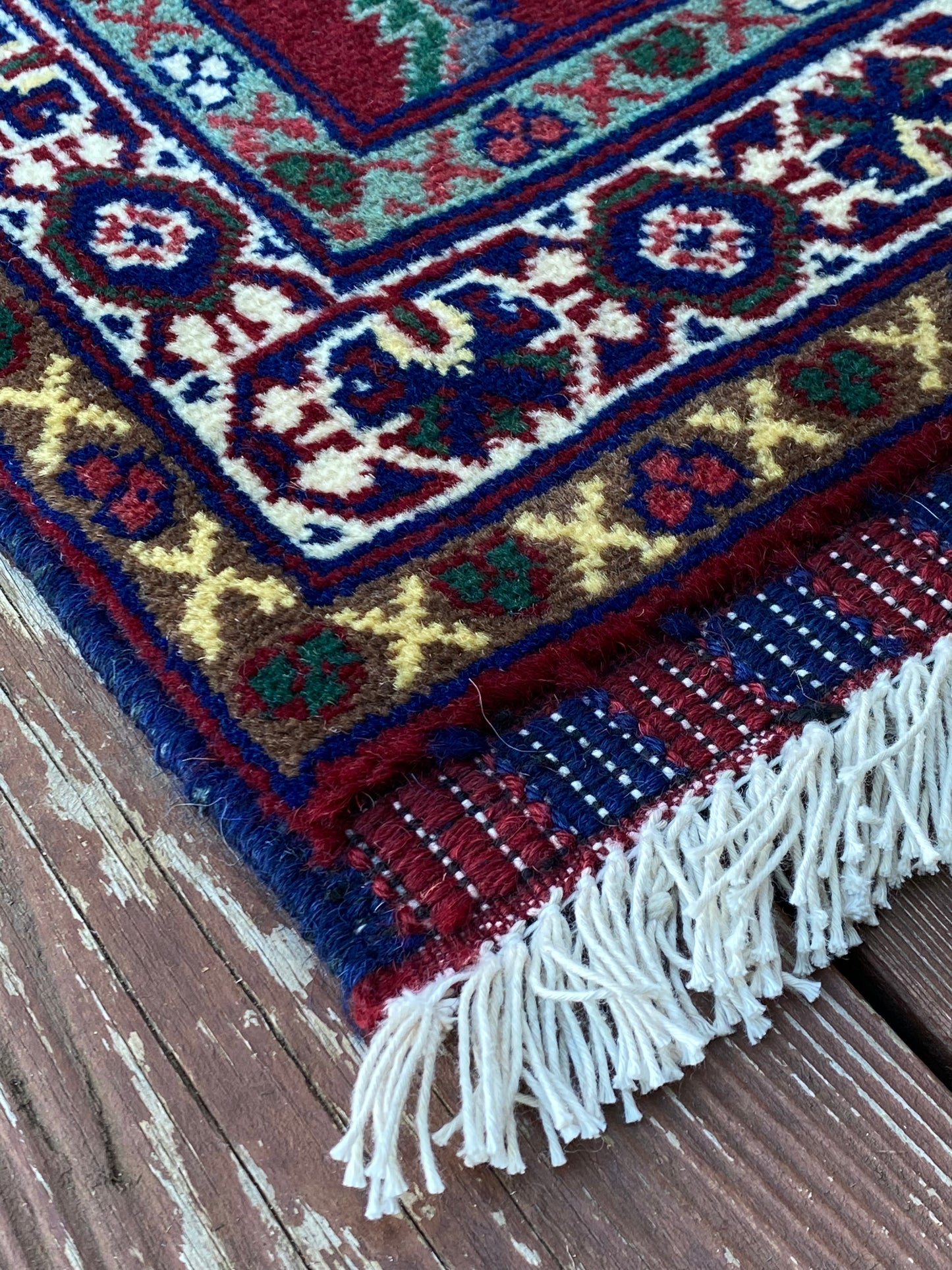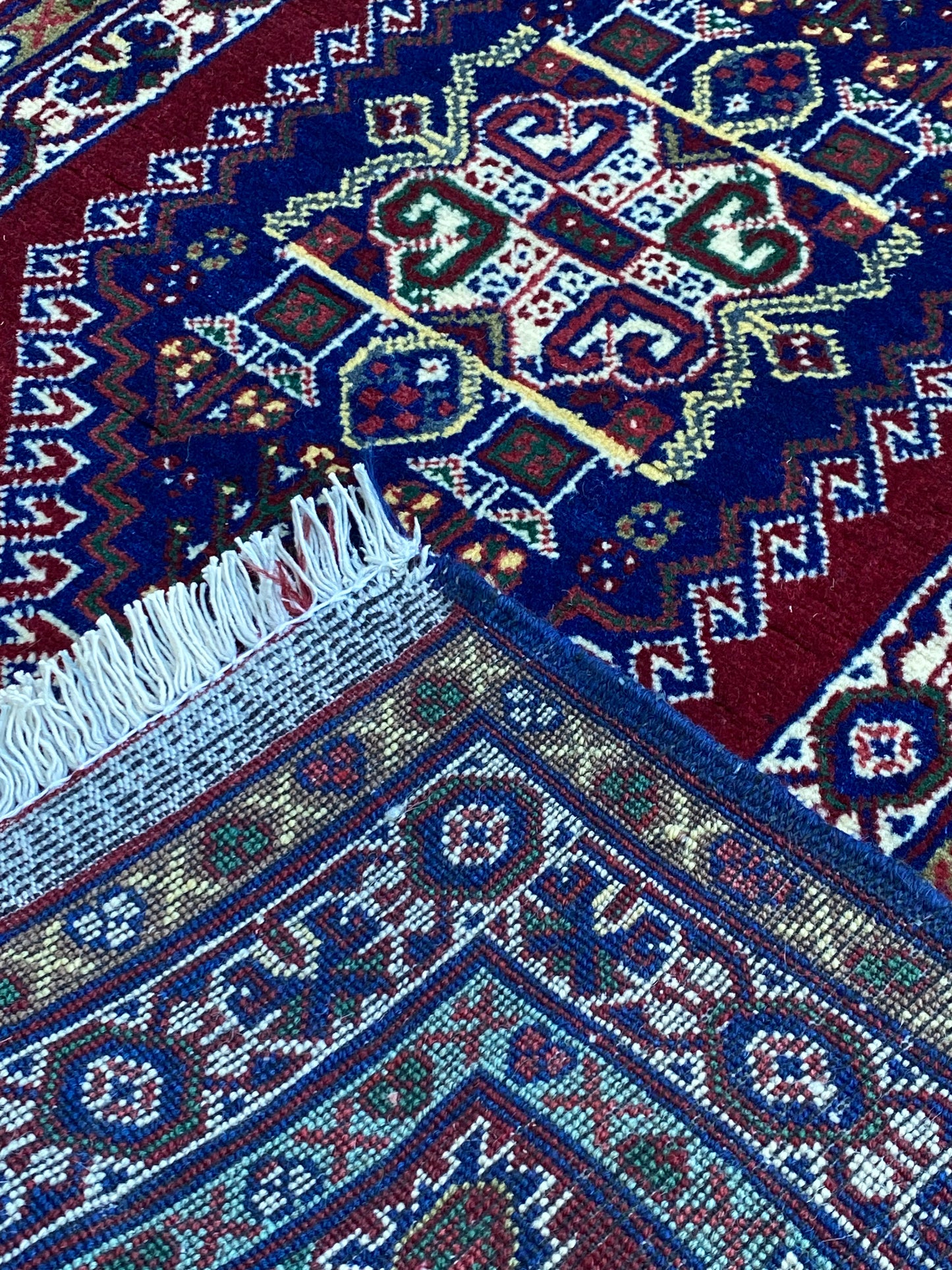361 trading
Samarkand - Runner - 2 1/2 x 10
- Regular price
- $690.00
- Regular price
-
- Sale price
- $690.00
- Unit price
- per
Couldn't load pickup availability
Samarkand rugs are one of the richest textile traditions in the world. There’s a tendency to lump all Central Asian textiles into one family when in fact regional weaving and aesthetic styles are quite distinct.
Samarkand, is the third-largest city in Uzbekistan, and it’s perhaps most noted for its position along the Silk Road. In ancient times the city of Samarkand linked the Far East to the West.
This carpet is a high quality rug was made in Northern Afghanistan by the Hazara tribe using a combination of dyes. It is 100% sheep wool with double knot weaving. It carries about 256 knots per sq. Inch. A is a very durable carpet.
Samarkand designs and patterns were heavily influenced by a confluence of cultures. In general, Samarkand rugs are considered more Chinese-influenced than Central Asian/Middle Eastern. However, a multiplicity of ethnicities have been present in the Xinijiang area for centuries, and their various cultural influences have manifested in Samarkand rugs.
Richly-patterned borders denote Turkish influence. Pomegranates are symbols originating from Turkey, and the swastika – a Hindu symbol for God and energy – comes from India and it too often appears in Samarkand rugs. Influences from Russia, Pakistan and other parts of Central Asia can also be found in some Samarkands.
With the rise of manufacturing and industrialism in the 20th century, the production of Samarkand rugs waned.
However, they are still popular in contemporary design, especially the more abstract patterns, which are easy to pair with contemporary aesthetics.
In our age of globalization it’s tempting to think ‘we’ invented the cultural melting pot. Samarkand rugs serve as a reminder that artisans have been borrowing and blending aesthetics for centuries.
NOTE: Photos taken in natural (outside) light.
Share








